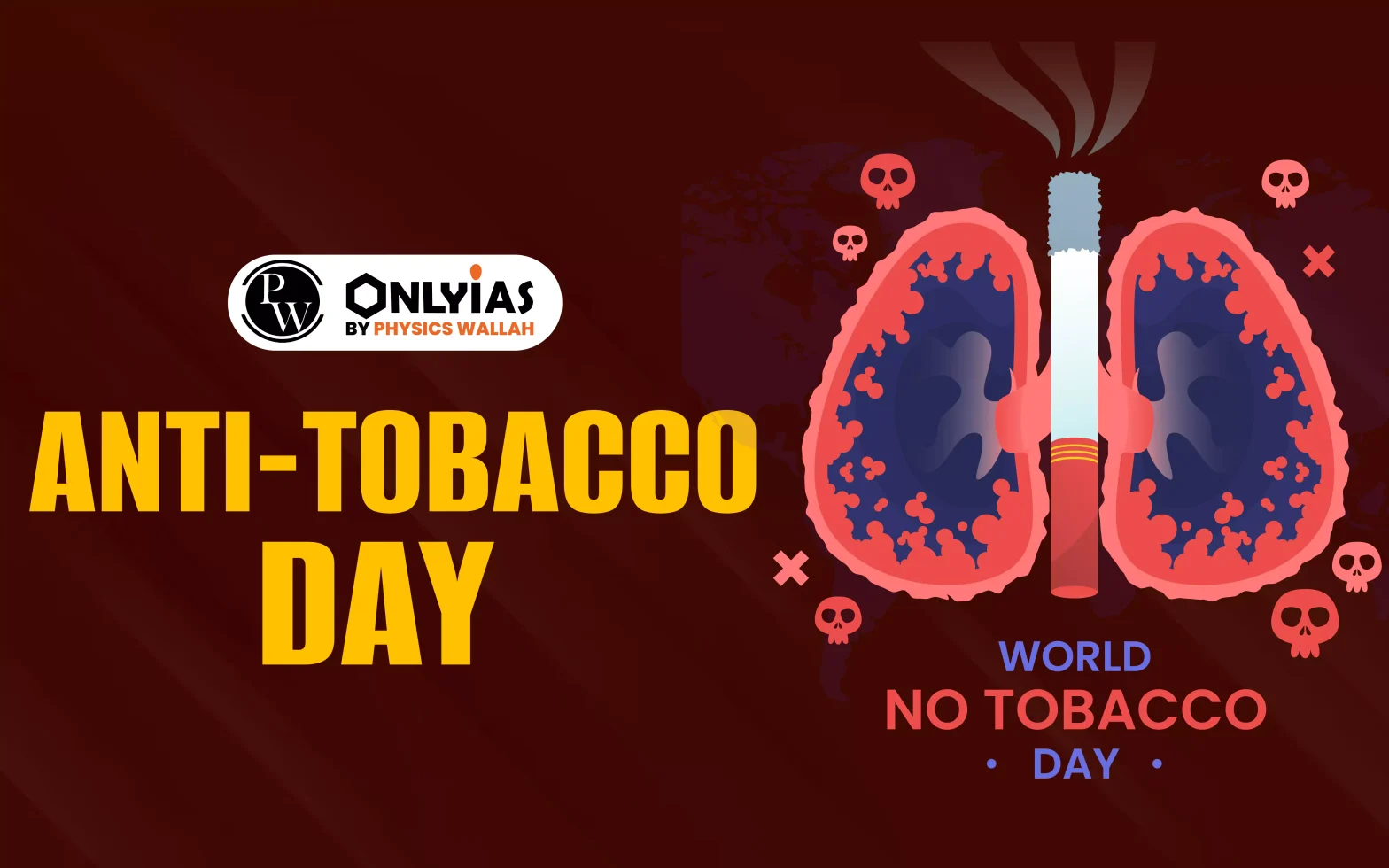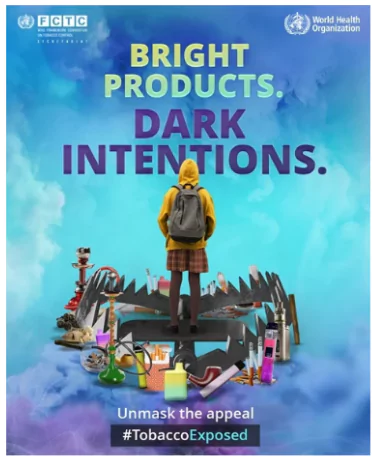World No Tobacco Day 2025 is observed on 31 May to raise awareness about tobacco's dangers and expose how industries target youth. Join the global campaign led by WHO to fight addiction and promote a tobacco-free future.

World No Tobacco Day: Every year on 31 May, the world observes World No Tobacco Day, a global health campaign led by the World Health Organisation (WHO) to raise awareness about the dangers of tobacco use and to support effective policies to reduce consumption. Known also as Anti-Tobacco Day, this observance highlights the devastating health, social, environmental, and economic consequences of tobacco use and the deceptive practices of tobacco and nicotine companies.
World No Tobacco Day serves as a powerful reminder of the public health crisis caused by tobacco and nicotine products, which claim over 8 million lives annually. Anti-Tobacco Day 2025 is not only a call to action but a spotlight on how the industry targets young people through manipulation and deceit.
World No Tobacco Day 2025 is a global campaign observed every year on 31st May to raise awareness about the harmful effects of tobacco use and to support effective policies to reduce tobacco consumption. Initiated by the World Health Organization (WHO) in 1987, this annual observance shines a spotlight on the manipulative tactics used by tobacco and nicotine industries, and educates the public on their health consequences.
The theme for World No Tobacco Day 2025 is “Unmasking the Appeal”, which focuses on revealing how industries target youth through flavoured products, deceptive marketing, and addictive product designs to create lifelong users.
| World No Tobacco Day 2025 | |
| Particulars | Details |
| Event Name | World No Tobacco Day 2025 |
| Also Known As | Anti-Tobacco Day 2025 |
| Date of Observation | 31st May 2025 |
| Organized By | World Health Organisation (WHO) |
| Established In | 1987 |
| First Observed On | 7 April 1988 (Initially as World No-Smoking Day) |
| Current Year Theme | Unmasking the Appeal |
| Focus of 2025 Campaign | Exposing industry tactics that target youth, including flavours & marketing |
| Significance | Raising awareness on the harmful impact of tobacco and its industries |
| Target Audience | The general public, especially youth and policymakers |
World No Tobacco Day was first conceptualised in 1987 by the Member States of the WHO. Initially observed as a “world no-smoking day” on 7 April 1988, it was later decided to mark 31 May each year as World No Tobacco Day.
In 1988, the World Health Assembly officially passed Resolution WHA42.19, designating 31 May as World No Tobacco Day. The objective is to inform the public about the dangers of tobacco, expose the unethical tactics of the tobacco industry, and promote global action to reduce tobacco use.
It aims to:
The campaign was initiated by the World Health Organisation, and the idea was solidified through resolutions passed by the World Health Assembly. WHO plays a central role in global tobacco control, working in collaboration with member states to implement the Framework Convention on Tobacco Control (FCTC) and support policies to curb the tobacco epidemic.
The World No Tobacco Day 2025 theme is “Unmasking the Appeal”, focusing on the manipulative strategies of the tobacco and nicotine industries. These industries use addictive and tempting flavours, attractive packaging, and digital marketing tactics to target young people and sustain tobacco consumption. By exposing these deceptive practices, WHO aims to protect future generations and promote stronger regulatory actions.

Source: WHO
Tobacco is derived from the leaves of the Nicotiana plant and contains nicotine, a highly addictive substance. It is consumed in various forms such as cigarettes, cigars, pipe tobacco, and smokeless tobacco (like gutkha and khaini in India).

Image Tobacco, Source: Wikipedia
The Global Burden of Disease study estimates that tobacco use causes approximately 8.7 million deaths annually. Of these, 7.7 million are due to smoking, while 1.3 million result from second-hand smoke exposure.
Despite regulatory efforts, data reveals a disturbing trend. In Europe, e-cigarette use among adolescents (12.5%) surpasses adult usage (2%). In some regions, school children use e-cigarettes at a rate two to three times higher than conventional cigarettes.
In India, the picture is just as concerning:
India is home to over 253 million tobacco users, making it the second-highest globally in terms of user population. Tobacco use contributes heavily to India’s disease burden and premature mortality.
India has implemented several tobacco control measures:
However, enforcement and awareness remain critical to further reducing tobacco consumption.
WHO emphasises the need for stricter regulations, including:
In the WHO European Region, only 4 countries ban all flavours in e-cigarettes, and just 11 fully prohibit advertising. These gaps leave young people vulnerable to targeted industry campaigns.
Anti-Tobacco Day 2025 is not just about awareness—it’s a call to action. Governments, healthcare providers, educators, and individuals must work together to:
World No Tobacco Day 2025 serves as a powerful reminder of the ongoing threat posed by tobacco and nicotine products. It underscores the urgency of “unmasking the appeal” and dismantling the sophisticated tactics used by industries to trap millions into a lifetime of addiction and disease.
By exposing the truth, promoting regulation, and empowering people with knowledge, Anti-Tobacco Day continues to champion the global fight for a tobacco-free world—one where every person can enjoy the right to health and a longer, healthier life.
Ready to boost your UPSC 2025 preparation? Join PW’s UPSC online courses today!
The main goal of Anti-Tobacco Day 2025 is to raise awareness about the health risks of tobacco and urge stronger tobacco control policies globally.
The World Health Organization (WHO) organizes World No Tobacco Day every year on 31st May to combat the global tobacco epidemic.
World Anti-Tobacco Day is observed on May 31 to educate people about tobacco's harmful impact and encourage quitting for better health.
The theme for World No Tobacco Day 2025 is “Unmasking the Appeal”, focusing on youth-targeted marketing by tobacco industries.
Tobacco consumption can lead to cancer, heart disease, lung disorders, and premature death, affecting both users and passive smokers.
Anti-Tobacco Day campaigns educate youth on the dangers of nicotine addiction and reveal misleading industry tactics targeting young consumers.

<div class="new-fform">
</div>